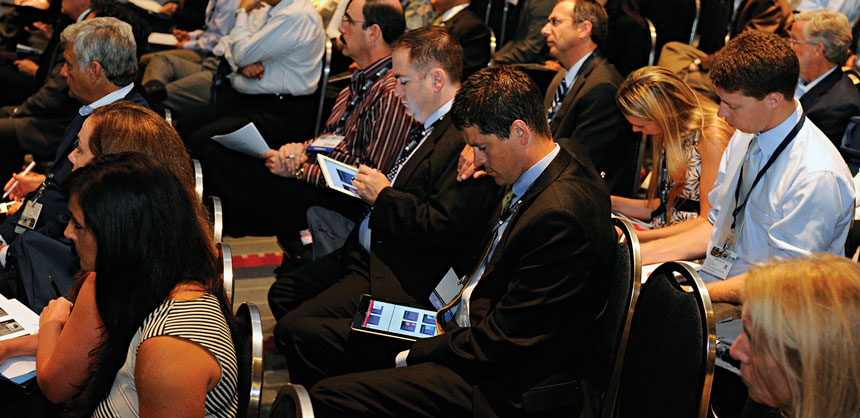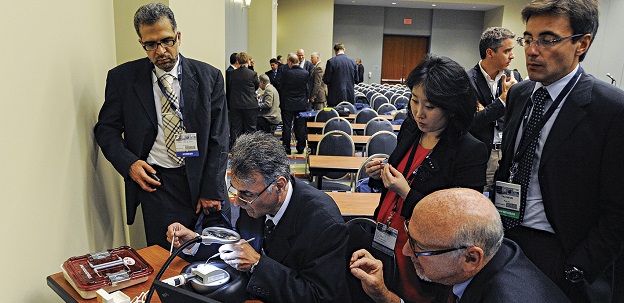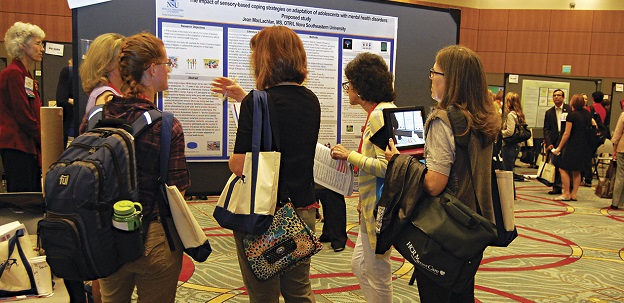Staying Ahead of the Learning CurveAugust 1, 2013
Trends in Delivering Effective Education Programs By Timothy HerrickStaying Ahead of the Learning Curve
Trends in Delivering Effective Education Programs
Attendees interact with their iPads during an American Academy of Otolaryngology – Head and Neck Surgery Foundation education program. Credit: AAO-HNSF and The Photo Group
As a leading revenue producer for associations and their events, education programs have never been more important. An education program is a key driver of association membership and event attendance, but in our ever-changing world, there is an increasing array of educational resources potentially competing with “live” educational experiences, and planners and association education program managers are under newly intensified pressure to ensure that the distinctiveness of that live experience is not diminished.
“Everyone in the association industry is working twice as hard to prove the value of their educational content, and to provide valuable content to their members and meeting attendees,” says Amy Ledoux, CMP, CAE, senior vice president, meetings and expositions, ASAE The Center for Association Leadership. “What we are seeing, within our (ASAE) members, is that there is so much change in organizational environments, but there is more pressure to make education relevant to members. Education is one of the most valuable things an association can provide, and it is what their members tend to value the most.”
Creating educational opportunities, according to Heather Rhoderick, CMP, MBA, director, events and education, American Composites Manufacturers Association, is one of the core components of her organization. For her profession’s largest annual conference, “Exhibits and networking are the top attendance drivers, followed by education,” she says, “However, over the past four years, education continues to gain in importance with attendees. It is becoming more of a reason they are attending our trade show.”










